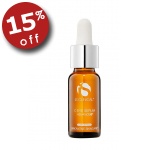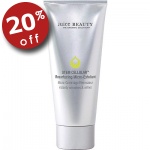In order to avoid premature aging, sagging skin, and wrinkles - and, more important, reduce your risk of skin
cancer you need to protect your skin from the sun. As we’ve said before, skin cancer is a growing epidemic in the United States. In
1996, there were an estimated 9430 deaths from the disease.
There are three types of skin cancer (or carcinoma): basal cell cancer, squamous cell cancer, and malignant melanoma.
· Basal cell cancer. This common cancer forms in the basal cell layer of the epidermis, where new cell growth begins. This is the most superficial and most easily cured form of skin cancer, though it can still cause death if not treated early. About 75 percent of all skin cancers are basal cell cancers. Ninety-five percent of these cancers are caused by prolonged sun exposure.
· Squamous cell cancer. Also caused by sun exposure, squamous cell cancer makes up 20 percent of all skin cancers. As the name indicates, it develops in the squamous cell layer of the epidermis. These cancers grow more quickly than basal cell cancers and are therefore harder to treat.
· Malignant melanoma. This deadly form of skin cancer accounts for only 5 percent of all cases but 75 percent of all deaths. It begins in the melanocytes, the cells that produce the pigment melanin. In its early stages, it is highly curable. However, it grows quickly and often spreads throughout the body before it can be treated.
The Skin Cancer Foundation recommends that you keep in mind
the warning signs of skin cancer by learning the following ABCDs.
· Asymmetry. Skin cancers tend to be asymmetrical, meaning a line drawn through the middle wouldn’t create matching halves. Most
moles are round and symmetrical.
· Border. A lesion with irregular borders is also a sign of skin cancer. Harmless moles have smooth, even edges, while suspicious
growths have scalloped, uneven, or notched edges.
· Color. Harmless moles are usually a uniform shade of brown, while early cancers can be varied shades of brown, tan, and black.
Later-stage cancers can be red, blue, or white.
· Diameter. Skin cancers are generally larger than 6 millimeters, or Ľ inch—about the size of a pencil eraser. They also tend to grow
more quickly than common moles.
Some experts warn, however, against taking these characteristics too literally and recommend reporting any changing growth— regardless of size or color—to your physician, especially if you have a family history of skin cancer.
Every three months, says the Skin Cancer Foundation, practice your alphabet with a self-examination. Using a mirror, examine you head and face, and use a blow-dryer to check your scalp. Work you way down your body, using a hand mirror and full-length mirror to get a look at hard-to-see places, such as the soles of the feet and the genitals. If you’re a woman, check underneath your breasts, as well.
If you spot any signs of skin cancer, see your dermatologist immediately As with any form of cancer, early diagnosis means a better
chance of successful treatment.




 Today's random forum topics
Today's random forum topics
 What our customers are saying
What our customers are saying